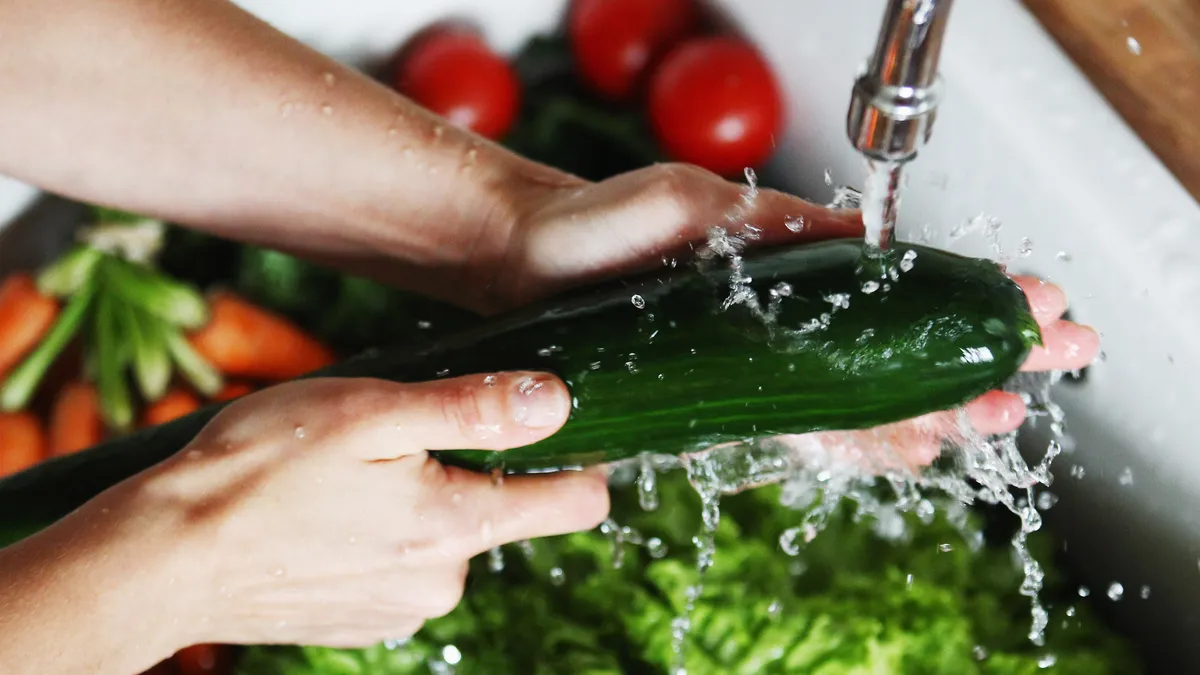Suzanne Simon and Bettina Stern are the co-founders of Chaia, a fast casual restaurant based in Washington, D.C.
While only 5% of Americans identify as vegetarians, according to a 2018 Gallup poll, the New Year's resolution to eat less meat has arguably joined the ranks of Dry January. This year, reaching that goal got a little more convenient. Some of the world's biggest fast food chains, including KFC and McDonald's, are ringing in 2022 with plant-based menu options aimed at the growing number of Americans looking to curb their inner carnivore.
At face value, democratizing access to plant-based meals is progress we can celebrate. It's a potentially significant step for "food deserts," areas where roughly 19 million people in the U.S. have limited access to healthy food.
But, as with almost any problem worth solving, there's no quick fix for Americans' struggles to eat healthier.
To us personally, highly-processed plant-based meat alternatives are not appealing from a taste or texture perspective. More importantly, they're not a silver bullet for unhealthy diets. Take Chipotle's just-launched, plant-based chorizo. EatingWell reports it is "higher in both carbohydrates and calories than meat typically is" and serves as an example of why some nutritionists classify these alternatives as "sometimes" items.
We do see a particularly significant benefit for the environment, however, because even processed plant-proteins have less of an impact on climate, water and land than their real-meat counterparts — particularly beef.
The bottom line: eating fresh, local, whole vegetables is still the best thing you can do for your health and the health of the environment. If processed beef products are at the other end of the spectrum, processed plant proteins fall somewhere in between, slightly closer to fresh vegetables.
We recognize that, compared to meat, vegetables take a bit of work to turn into entrée-worthy dishes. You can throw a steak in a hot pan, add salt and present a meal to please any omnivore. In contrast, vegetables require more careful cooking to coax out subtle flavors and textures. Compared to microwaving a frozen patty — plant-based or not, there's no contest in convenience.
Consuming vegetables in their original form may not be effortless, but in many ways it is the simplest. We've complicated eating better by constantly categorizing foods with terms that indicate healthiness ("keto-friendly," "paleo-friendly," "low-carb") even if they're lacking in nutrition. It's no wonder many consumers are confused about what's actually in their food. And misinformed diet choices can have real negative health consequences, including vitamin deficiencies and disordered eating. Admittedly, we use "plant-based" as an apt descriptor for our menu, but don't love its growing buzzword status.
Our focus should be less on marketing, processing and hiding beneficial ingredients, and more about honoring the enjoyability of real food, vegetables included. And, while it's becoming more widely accepted, it bears repeating: you don't have to be a vegetarian to enjoy vegetables. People want more diversity in their food choice, and moderation is a much more successful approach to lasting change than stringency.
We recognize the real and complex challenges in asking people to eat more vegetables. Supporting the efforts of national and local organizations like our past and ongoing partners Rethink Food and Feed the Fridge, which work with restaurants to provide healthy meals in underserved communities, is crucial to making nutritious food more widely accessible. It's also important to make the most healthy and sustainable foods more enjoyable and approachable. Together, these are the elements of a roadmap to the future of food that we both should and want to eat.
We welcome the growing availability of plant-based meat alternatives as a step in the right direction. At the same time, we want to be sure Americans aren't forgetting or giving up on fresh vegetables as the best thing we can eat for ourselves and the planet. Drive-thru vegan chicken is a helpful solution once-in-a-while, but if we want to make the most meaningful and lasting change, we'll need to put vegetables, in their true form, back in the center of our plates.













